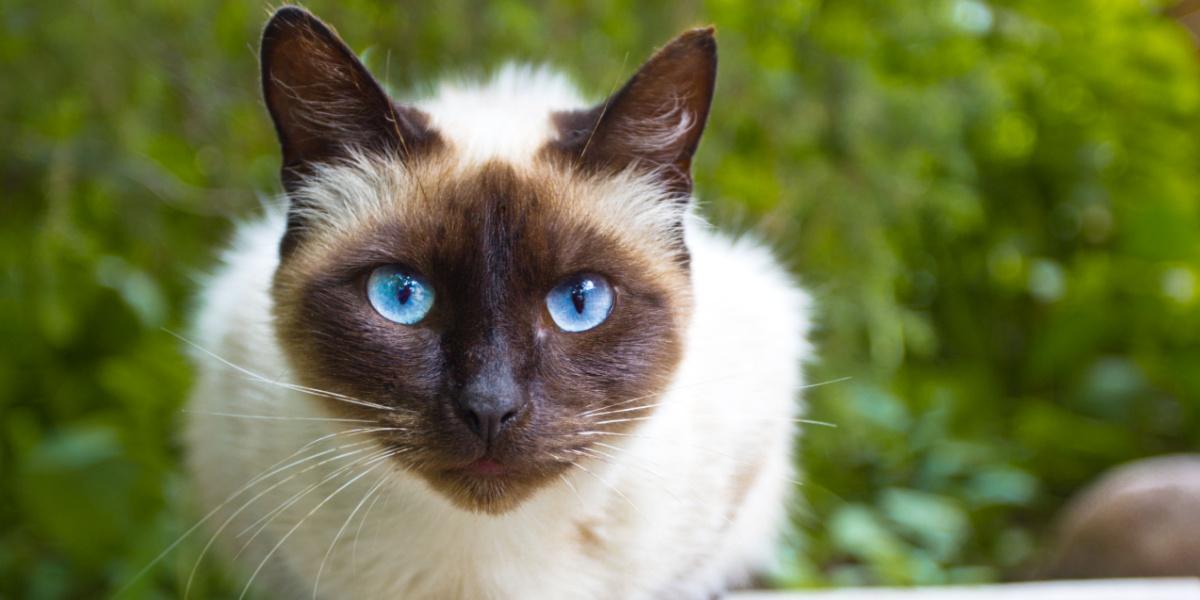
While we may find our cats’ behaviors often strange or even baffling, all cats have a unique body language that illustrates exactly what they are feeling or thinking. Taking the time to learn how to interpret feline body language is very rewarding for cat owners, and to strengthen our bonds with our beloved pets.
All felines are highly intelligent creatures. Despite the fact they can’t ‘talk’ in the traditional way, they are extremely good at communicating using their body and vocalizing. One type of body language that is worth learning to understand, is cat ear positions.
The position of your cat’s ears is really an international language that lets everyone know exactly what sort of mood they are in, so you can adjust your behavior with them accordingly,
Cats use the position of their ears to communicate in many different ways.
Cats' ear positions can tell us a lot about how they are feeling or what mood they are in, and help us predict their behavior.
Cats' ear position not only tells us about how they are feeling but also can be a valuable indicator of an injury or illness.Key Takeaways
What Do the Different Ear Positions of Cats Mean?

Cat ears can move in various different positions and angles to express a wide variety of emotion.
Cats’ ears have been well adapted over the years to portray their owner’s emotions. Cats’ ears can swivel right through 180 degrees! That’s pretty impressive.
Cats have 32 muscles in each ear. This is way more than humans have, which makes sense as we barely use our ears at all to communicate our moods. On top of that, our ears are pretty stationary.
The muscles in cat ears allow them to move their ears 180 degrees, which is a huge range of motion. These muscles help cats hear high-frequency sounds and enable them to swivel their ears through such a big angle, giving them a wide range of motion.
There are so many things we can tell about our cats from their ear position. A happy cat will usually have their ears facing forwards. A cat that is investigating something and is on high alert will point their ears up. A scared cat will have their ears held backward or flat down against their head in a sideways position. A confused cat may hold one ear up and one ear down.
Also Read: Why Do Cats Put Their Ears Back?
The Most Common Cat Ear Positions and What They Mean
1. Ears Upright
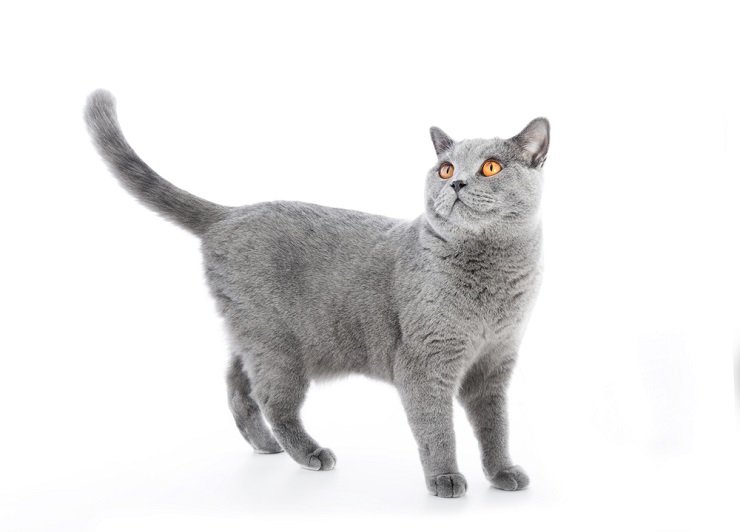
The upright cat ear position is one that expresses interest, alertness, and focus.
If your cat is holding their ears straight up, this position means that your cat is on high alert and is listening intently for someone or something. Your cat will be doing what they do best; being curious and keeping aware of their surroundings.
Cats may swivel their ears from left to right to home in on the sound they want to concentrate on. A good example of this is a cat watching birds out of the window!
Also Read: How Do You Train A Cat That Won’t Listen?
2. Ears Forward
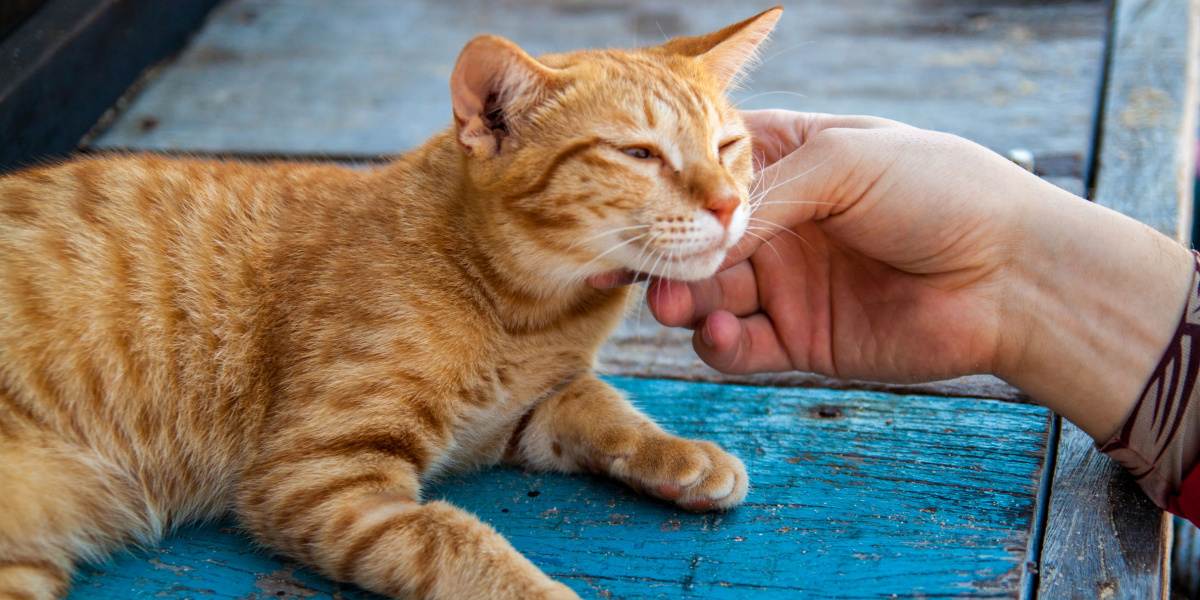
When your cat relaxes, so do their forward-facing ears.
If your cat has their ears forward, this cat ear position is neutral. This usually means your cat is happy, content, and relaxed. If your cat has neutral ears, they are in a good mood and open to interacting and playing with you, or dishing out those much sought-after kitty snuggles.
This cat ear position is often seen alongside slow blinking. This is a gesture cats make when they are feeling comfortable. They will adopt this ear position when they are in the company of someone they love and trust. If you see your cat’s ears in this position, it’s a sure sign they adore you!
Also Read: Do Cats Have Feelings For Their Owners?
3. Ears Held Back Or Sideways
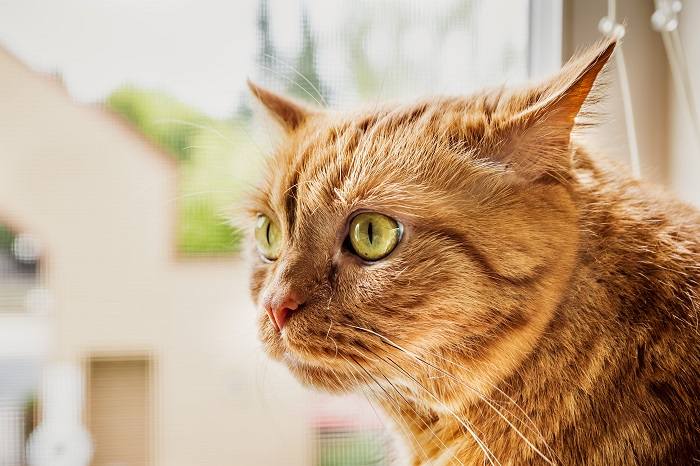
Nervous and frightened cats may hold their ears back and to the side.
If your cat has their ears held back or sideways this means they are frightened or anxious. Something has upset them and they are on high alert and waiting to see if they need to respond.
Your cat’s adrenaline will be kicking in and their fight or flight response will be triggered. Be warned if they are doing this, watch out for aggressive behavior. They may well attack and try to bite or scratch you. You will get some other clues from their body language, take a look at your cat’s pupils.
If they have wide pupils (that’s the black bit in the center of the eye) that means they are frightened. Also look at their body, if they are tense and crouched they will be preparing to attack or run away. They may also start hissing or growling.
4. Ears Pointing Outwards And Held Low
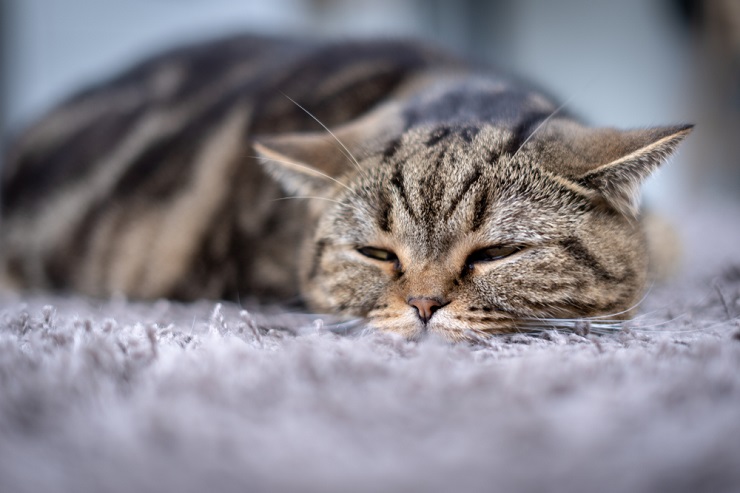
Be on the lookout for this cat ear position, as it’s an indication that your cat doesn’t feel well.
This cat ear position may be an indication that they are feeling sick or a sign of illness. Cats generally don’t give much away when they are ill as this has become an advantage to them as they evolved.
If they are able to hide the fact they are sick, they will be less of a target to predators. Pay close attention to your cat’s behavior. If they seem to be off their food or not drinking, or if they are taking themselves off on their own, it could be a sign they are sick and need to see a vet.
Also Read: 10 Adorable Signs Your Cat Has Imprinted On You
5. One Ear Up And One Ear Down

Confused cats may position their ears in a lopsided way.
If your cat is holding one of their ears up, it can mean that they are feeling confused. Often our cats do this when they are trying to focus on two different noises or if they are in a new environment with lots of different stimuli they haven’t experienced before.
Also Read: 7 Sounds Cats Hate That You Should Avoid
For example, if your cat is in a new place they have never been to before such as their first trip to the vet. Another reason one ear might be up and one down, is your cat has health problems.
This may be an injury to one ear or an ear infection present. Ear infections are very common in cats. They can be caused by bacteria or yeast. Your cat may hold the ear down as it is too painful to move.
6. Twitching Ears
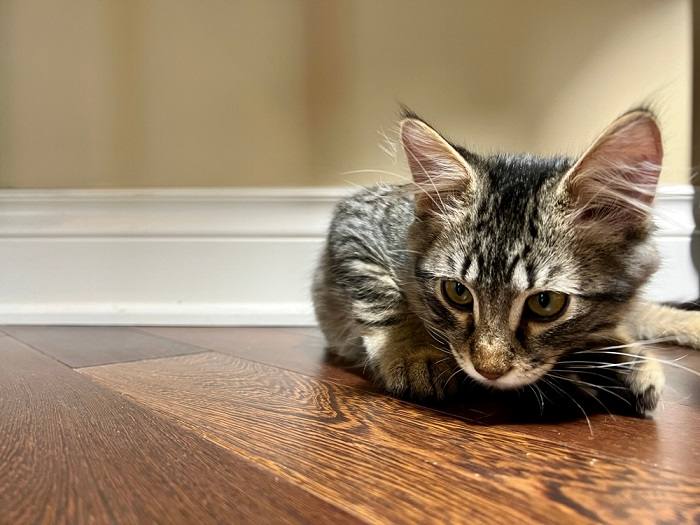
Cat ears are sensitive and may twitch to even distant sounds.
Cats often twitch their ears or rotate them quickly in different directions using sudden movements. The main reason is if your cat is on high alert or they are agitated. Cats have very sensitive ears and they can hear things of a certain frequency that humans can’t.
Cats twitch their ears to capture the noise in their environment and they use the muscles in their ears to mold them into the correct shape. Your cat will be acting on their instincts, waiting to flee or pounce depending on what they are faced with.
Note also – if your cat seems to be twitching their ears frequently and scratching or pawing at them – this could be a sign of ear mites and you need to take a trip to your veterinarian.
Also Read: Revolution Plus For Cats: Overview, Dosage & Side Effects
Understanding the Full Spectrum of Cat Communication

Your cat is a bundle of expression. Learning feline body language can be very rewarding.
Cat ear positions are not the only way they communicate. There are many other ways cats communicate with us humans, other cats, and other creatures. The most important methods are:
- Body language including position and posture,
- Vocalization and sounds
- Facial expressions
Some of these are reserved just for us humans, whereas some are just for cats. Others are universal to all creatures. Cats have developed these methods over years of evolution to allow them to survive in their natural habitats. They need to be able to communicate with others to protect themselves, warn off predators, and hunt in packs.
Cats also need to be able to find a suitable mate. In domestic cats, these forms of communication allow them to form strong attachments with their primary caregivers who tend to their daily needs. When we can interpret what cats are trying to tell us with their body language, it makes for a harmonious relationship.
Also Read: 5 Ways To Build A Stronger Bond With Your Cat
Cats are such emotive creatures and they communicate so much with us and with other cats using their body parts. Your cat’s body language is not something to be overlooked.
Frequently Asked Questions
What do cat’s ear positions mean?
Cats use their ears to communicate how they are feeling. Here are a few examples below:
- Ears forward – Happy and content
- Ears upright – Alert and paying attention to something
- Ears held backward – Frightened or anxious
How can you tell a cat's mood by their ears?
You can tell exactly what sort of mood your cat is in by looking at the position of their ears. There are actually quite a few different positions that they can move their ears into. This might be surprising to us humans who can just about manage a wiggle backward and forwards and who don't use their ears to communicate at all.
What does it mean when a cat's ears are down to the side?
If your cat is holding their ears low and down to the side of their head, this means that they are frightened and anxious. They may either retreat into a favorite hiding spot or attack. If they do go away to hide, you must not follow them or try to interact with them as they will more than likely become aggressive and defensive.
Why do my cat's ears go back when I pet him?
If your cat’s ears are in a neutral position, but then suddenly move backward when you reach out to pet them, stop immediately. This is one of the more subtle ways that they can tell you they are not comfortable with what you are doing.
They may be frightened or anxious, they may just not like you petting them the way you are. Whatever the reason, you need to take the hint and stop whatever it is that you are doing and give your cat some space.







